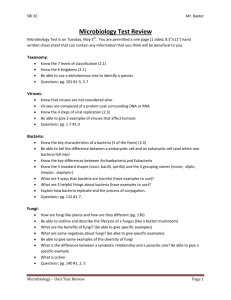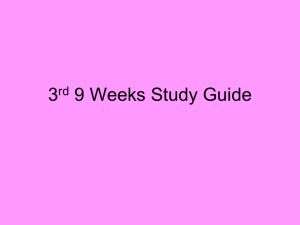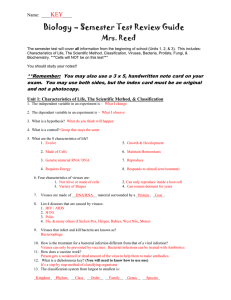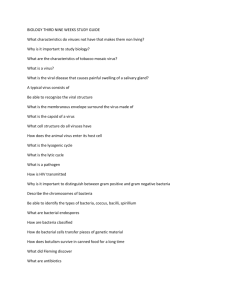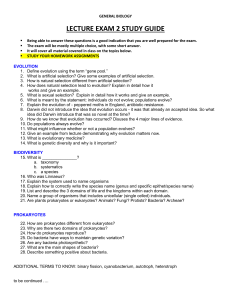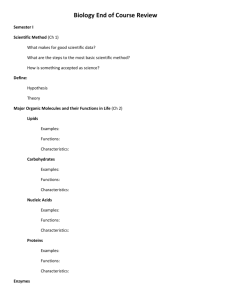Microorganism Notes WS
advertisement
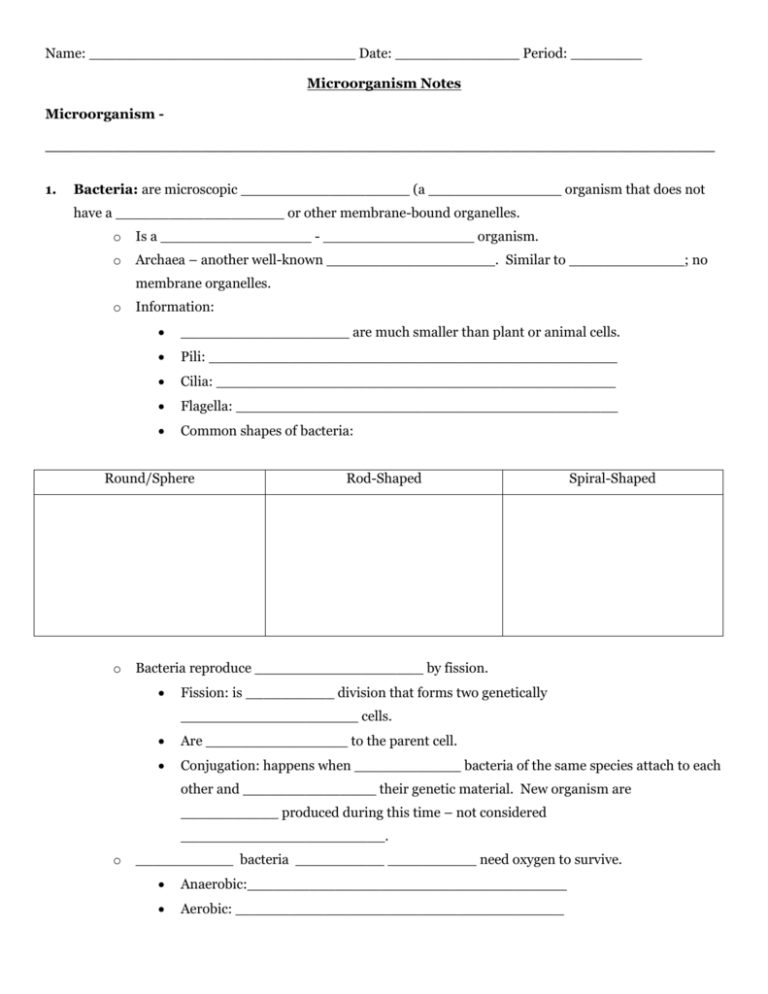
Name: ______________________________ Date: ______________ Period: ________ Microorganism Notes Microorganism _____________________________________________________________________ 1. Bacteria: are microscopic ___________________ (a _______________ organism that does not have a ___________________ or other membrane-bound organelles. o Is a _________________ - _________________ organism. o Archaea – another well-known ___________________. Similar to _____________; no membrane organelles. o Information: ___________________ are much smaller than plant or animal cells. Pili: ______________________________________________ Cilia: _____________________________________________ Flagella: ___________________________________________ Common shapes of bacteria: Round/Sphere o Rod-Shaped Spiral-Shaped Bacteria reproduce ___________________ by fission. Fission: is __________ division that forms two genetically ____________________ cells. Are ________________ to the parent cell. Conjugation: happens when ____________ bacteria of the same species attach to each other and _______________ their genetic material. New organism are ___________ produced during this time – not considered _______________________. o ___________ bacteria __________ __________ need oxygen to survive. Anaerobic:____________________________________ Aerobic: _____________________________________ o Bacteria obtain food in many different ways: - 2. o 1. Some take in _____________ and break it down and obtain ____________. o 2. Some _______________ on dead organisms. o 3. Some take in nutrients from __________________ hosts. o 4. Some _____________ their own _____________. Examples of good bacteria: 1. __________________________________________ 2. __________________________________________ 3. __________________________________________ Viruses: a _________________ of DNA or RNA surrounded by a layer of protein that can ________________ and ____________________ in a host cell. (Example: _________) Does not have a cell wall, a _________________, or any other ________________ present in cells. ___________________ are not considered to be ________________. o Cannot take in nutrients or use energy. o Cannot replicate by themselves. The living cell that a virus infects is called a ________________ cell. o 1. _____________ viruses go through an inactive stage. o 2. When ________________, a virus takes _____________ of the host cell and _________________. Mutations: ____________ viruses to adjust to __________ in their host cell. o These changes happen so ____________ that it is difficult to cure or ___________ viral diseases before they mutate ________________. Antibody: a ______________ that can attach to a pathogen and make it ________________. Vaccine: a ________________ containing material from one or more __________________ pathogens. 3. Protists: o o ________________ organism: membrane-bound _________________. o Decomposers / Can be harmful / Parasites / Example: ________________. 1. Plantlike Protists o Example: ____________________ - plantlike protists that produce food through _____________________ using light energy and carbon dioxide. Diatoms Dinoflagellates Euglenoids Characteristics: Characteristics: Characteristics: Picture: Picture: Picture: o 2. Animal-like Protists o ______________________ - are protists that resemble tiny animals. o ______________________ - a one celled organism (lives in wet environments) Ciliates Pseudopods Flagellates Characteristics: Characteristics: Characteristics: Picture: Picture: Picture: o 3. Funguslike Protists o ____________ ________________ dead plant and animal matter, making the nutrients from these dead organisms available for living organisms. o Example: Irish Potato Famine in 1845 (water mold) 4. Fungi: o Eukaryotes: _______________________________________________________ o Heterotrophs: ____________ make their own food. o Grouped together based on how they ______________ and how they ______________. Club Fungi Sac Fungi Characteristics: Characteristics: Picture: Picture: Example: Example: Zygote Fungi Imperfect Fungi Characteristics: Characteristics: Picture: Picture: Example: Example:

